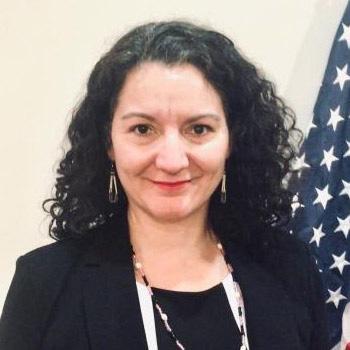
5 minute read
Voices From Across the Americas: We Won’t Be Silent in the Face of Violence!
Indigenous women in Colombia’s most remote regions are sexual prey for armed fighters who have been killing rights defenders amid a drug war that has gone on for decades. Indigenous girls under the age of 12 are frequent victims of rape in Costa Rica, where child sex tourism is rampant and sexual assault is the highest of any country in the Americas. Age is no barrier to violence in Mexico where it is not uncommon for very young Indigenous girls to die at the hands of killers.
These are the deadly realities for Indigenous women in Latin America.
Advertisement
The Indigenous women in Canada convinced the federal government to host a National Inquiry because of the extraordinary number of deaths and disappearances in their country. But it was made clear by speakers at the International Summit of the Americas on Violence Against Indigenous Women that this tragedy is occurring all across the Western world.
“We won’t be silent in the face of violence!” Amanda Tascon Panchi, the Technical Co-ordinator of the Department of Gender and Women at the Indigenous Organization of Antioquia in Colombia, told the Summit.
“There is a high rate of violence against Indigenous women in our communities,” said Ms. Panchi. “Previously, violence had been made invisible because women were scared and there was pressure by male assailants and authorities who prevented women from reporting it. Women are starting to speak up.”
But others from Latin America who spoke at the two-day conference painted a bleak picture of life for Indigenous women in their countries. They said the safety threats in South and Central America have only grown since the pandemic forced situations of isolation and reduced supports for victims. Marize Vieira de Oliveira Guarani, President of the Associaço Indígena Aldeia Maracanã of Brazil, said Indigenous women in her country are facing increased poverty due to COVID-19 because they are unable to sell their artisan works.
Meanwhile, said Ms. Guarani, conflict has increased, there is more violence and more rape, and there is a lack of portable water, food and medicine.
“If it were not for traditional medicine, the number of Indigenous deaths would be greater,” she said. But “Indigenous women are overwhelmed by their own work and caring for the sick among us.”
Even as the disease claims countless lives, resource development continues apace in Brazil’s rural areas, which are home to Indigenous communities.
Brazil, she said, is not keeping track of how many of the people who are getting sick from COVID-19 and who are dying of the disease are Indigenous. “We are just not there, not when we are sick, not when we are dead,” said Ms. Guarani. “There are women, Indigenous women who are trying to speak up and say “Hey, I’m here, I’m Indigenous, include me in the statistics.”
Reports all over the southern continent suggest violence against women in general has dramatically increased since the arrival of the pandemic. By one count, 22 percent more Brazilian women were murdered in March and April 2020, a 22 percent rise over the previous year. Indigenous women are part of that grim statistic. But COVID-19 is just the latest twist in the long story of violence against women in South and Central America. Poverty, armed conflicts, mass migration, remote topography, and uncaring governments have all contributed to create one of the most dangerous places in the world to be an Indigenous woman. Claudia Jimena Pai, a member of the Awá integrante de la Asociación de Autoridades Tradicionales Indígenas- Awá, Unidad Indígena del Pueblo Awá (UNIPA) in Colombia, told the Summit that there has been a statistical extermination of her people, of whom 53 percent are women.
“We face many conflicts,” said Ms. Pai. “The presence of illegal groups in the community has affected our women. People were murdered last week, and this means that women have to expose themselves and provide education for their children.”
Deforestation and mining have contributed to the problem for the jungle and mountain people of her country, she said. “The focus needs to be on communication and support for young women and men so they can share their stories and raise their voices about what is happening.”
Sara Mayorga-Villanueva, co-ordinator of Alianza de Mujeres Indígenas de Centroamérica y México, said her organization has seen problems facing Indigenous women being brushed under the rug since the start of the pandemic, including access to health care and education.
At the same time, there have been massive migrations throughout Mexico and Central America, she said, particularly of young women. With no opportunities at home, said Ms. Pai, “these women understand they have to go. But they are risking their lives to do this. There are people out there who want to subject them to human trafficking and abuse.” Women are the principal targets, she said, but little girls under the age of 12 are often victims in Costa Rica.
Laura Hernández Pérez of the Nahua Puebla, Colectivo Yehcoa Um in Mexico said there is historically a lack of public policy and health services for Indigenous peoples in her country. The gaps have only increased during the COVID-19 pandemic.
“There is also an enormous increase in violence against Indigenous women, little girls, and children. The government of Mexico is missing in action,” said Ms. Pérez. “Turning to those victims of violence, it is mainly very young girls. There are a number of cases of femicide. You do not feel that anyone is looking.”








